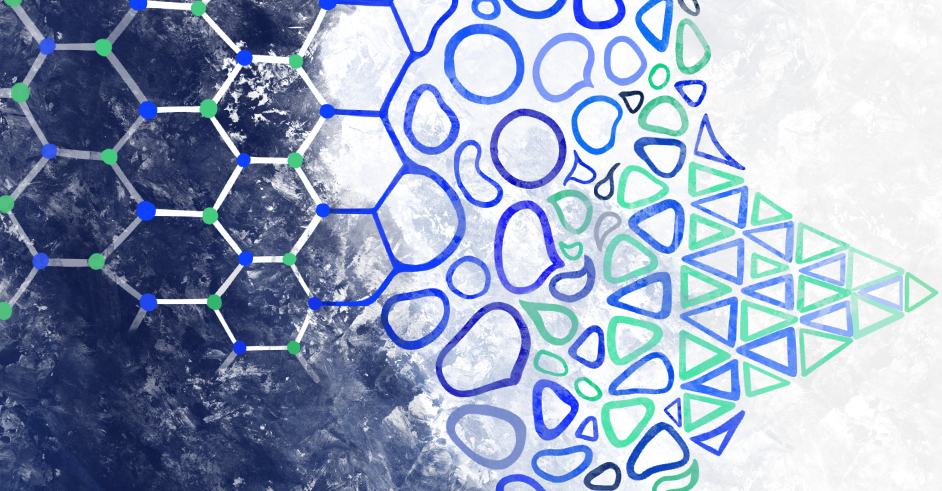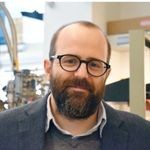Columbia Physicists Discuss the State of Quantum Science
With 2021 drawing to a close, Columbia physicists note the biggest quantum advances they saw last year and what may be coming as we head into 2022.

What do you think were the biggest quantum advances in 2021?
Dmitri Basov, Higgins Professor of Physics: The increasing number of qubits available for quantum computing is notable. In July a team from the Harvard-MIT Center for Ultracold atoms published a simulator with 256. There has also been good progress on discovering novel quantum phases, which can reveal universal properties that we might one day take advantage of to build novel quantum devices. For example, a team led by Eugene Demler and Hongkin Park at Harvard developed a system for studying phase transitions in a unique structure called a Wigner Crystal, while at Columbia, Abhay Pasupathy and Cory Dean found evidence of quantum criticality, the transition point between quantum phases, in samples of tungsten diselenide.
Sebastian Will, Assistant Professor of Physics: A big trend is the rise of atomic systems in the space of quantum technology, and particularly in quantum computing. Just a few years ago, few people would have thought this is possible. As Dmitri pointed out, that 256 qubit quantum simulator is a key result, as were atomic quantum simulators of 2D antiferromagnets and a spin-liquid state.
In some contexts, antiferromagnetic order is believed to be related to high-temperature superconductivity—a long-standing open question. Spin liquids are a very complex state of matter featuring an extremely high degree of entanglement, which may allow us to create extremely stable “topological” qubits. Spin liquids have long been predicted, but getting clean experimental signatures has been extremely difficult. The result from Giulia Semeghini and her colleagues is one of the cleanest attempts to create and detect this state.
Cory Dean, Professor of Physics: A persistent theme from quantum materials this past year has been the discovery of a wide variety of correlated phases in different 2D materials. For example, Wigner crystals were found to be ubiquitous in moire-patterned heterobilayers by many groups, superconductivity has now been found in ultra-clean bilayer and trilayer graphene, and there is evidence of superfluid excitons in both specifically engineered multi-layered structures and in naturally occurring bilayer transition metal dichalcogenides.
Although these phenomena were already known—in some cases for many, many years—2D materials provide a uniquely tunable platform where we can modify the parameters of these phases, and even transition from one to the next, in-situ, without changing the chemical composition of the material. This is a remarkable new opportunity, which allows a broad community of researchers to revisit long-standing questions about how correlated phases emerge in systems with strong electron-electron interactions.
Tanya Zelevinsky, Professor of Physics: From the perspective of using quantum techniques for more fundamental applications, one very notable result from a team at the National Institute of Science & Technology is the ability to compare three independent quantum clocks—these use very cold atoms that can track frequency and therefore time—with extreme precision: their error is at the 18th digit! This is hitting the limit of how good any clock can be on Earth and allows the use of these clocks and clock networks to check for the presence of new physics, such as dark matter.
Any predictions for 2022?
SW: Nothing is harder than predicting the future—especially without a quantum computer! I think we will see more surprising (and fast) advances with atomic platforms. With atomic systems, there is still a lot of headroom for developments before we need to worry about hitting fundamental physics limitations. I think we will continue to see big scientific leaps with atomic hardware, especially as the engineering of the setups improves.
TZ: In the next few years, I expect that a similar level of control that we’ve achieved over atoms will be exerted over more complex particles like molecules. This will allow much broader and more conclusive searches for new physical laws that are not present in the Standard Model. The quantum control techniques to be developed here are, of course, also very useful for quantum simulations and other applications.
CD: In 2021, 2D materials emerged as a kind of universal platform for studying generalized quantum phenomena. However, this work is in its infancy, and we are still in an early discovery phase. In most of these systems, there is extreme sensitivity to how interfacial layers precisely align and interact with one another, and the role of strain is both ubiquitous and poorly understood. I expect, or am hopeful, that we will gain control over this aspect, i.e., we will really develop atomic-scale control over the atomic structure of layered systems. In doing so, we will move from being limited by thermodynamics with disorder being an inescapable feature to being able to define the exact position of every single atom in a device. This will be a remarkable leap forward—akin to what is currently done in cold-atom experiments—but realized on a chip.
What are the outstanding questions the quantum field is grappling with?
CD: Disorder and its negative influence on quantum states. The limiting problem of realizing scalable quantum computation is how to prevent quantum states from decohering due to fluctuations in the environment. There’s a two-pronged approach to fighting this: One, make systems cleaner and at the same time develop quantum algorithms that can correct for any remaining disorder; or Two, try to realize new kinds of quantum phases that are intrinsically insensitive to this disorder. Steady advancements have been realized in the pursuit of quantum computation by following the first path. If we can successfully realize the second, i.e. find ways to encode quantum information in new, "fault-tolerant" quantum phases, this will open entirely new frontiers of possibilities.
SW: In quantum computing, one of the biggest questions is which hardware design will actually be the most useful. Will it be superconducting qubits, trapped ions, neutral atoms, perhaps dipolar molecules…or something else? Continued and open-minded research will help us answer this question.
DB: How to get quantum hardware onto a battery-operated chip that can function at room temperature.




